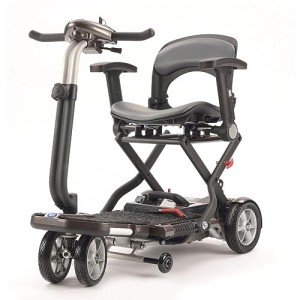Portable Mobility Scooters: Enhancing Freedom and Independence
As the world increasingly moves towards inclusivity and accessibility, portable mobility scooters have become a revolutionary solution for individuals with mobility difficulties. These compact, easy-to-transport scooters are developed to empower users with the capability to navigate their environments with self-confidence and ease. In this post, we will check out the qualities, advantages, and considerations when going with a portable mobility scooter, supported by tables and FAQs to offer a detailed overview.
Understanding Portable Mobility Scooters
Portable mobility scooters are lightweight, battery-operated cars that supply an alternative mode of transportation for those with minimal mobility. Assembled utilizing long lasting materials, they are particularly crafted to be lightweight and compact to help with simple transport in vehicles or on public transport.
Key Features of Portable Mobility Scooters
| Feature | Description |
|---|---|
| Weight Capacity | A lot of scooters can support users weighing between 250 to 500 lbs |
| Battery Life | Typical series of 10 to 30 miles per charge |
| Speed | Normally operates between 4 to 8 mph |
| Turning Radius | Differs from 32 to 60 inches, making them ideal for indoor usage |
| Foldability | Lots of designs can be easily folded for transport |
| Wheels | Usually geared up with either solid or pneumatic tires |
Portable mobility scooters are perfect for both indoor and outdoor usage, offering stability and ease of movement.
Advantages of Portable Mobility Scooters
- Improved Freedom: Users can take part in activities that were formerly tough, such as shopping and mingling, therefore improving overall lifestyle.
- Transportation Convenience: Many portable scooters can be easily taken apart or folded, permitting users to carry them in automobiles, vans, or public transport.
- Cost-efficient: Compared to powered wheelchairs, portable scooters are typically more economical, providing an economical solution.
- User-Friendly Design: Most models feature user-friendly controls, making them simple to run for people of all ages.
- Range of Options: With various brand names and designs on the market, potential users can select scooters that suit their particular requirements-- ranging from off-road usage to compact indoor alternatives.
Important Considerations When Choosing a Portable Mobility Scooter
- Weight and Portability: Assess the weight of the scooter itself and its elements. Lighter models are normally easier to transfer.
- Battery Life and Range: Consider how far you require to travel on a single charge. If you expect long journeys, a scooter with an extended battery life is vital.
- Size and Dimensions: Measure where you'll save the scooter and guarantee it fits conveniently in your automobile or home.
- Convenience Features: Look for scooters with adjustable seats, armrests, and other ergonomic functions for added comfort throughout use.
- Terrain Compatibility: If you plan to utilize the scooter outdoors, guarantee it can manage numerous terrains (e.g., gravel, yard) with ease.
| Factor to consider | Value |
|---|---|
| Weight & & Portability | Affects ease of transportation and storage. |
| Battery Life | Figures out variety and liberty to explore. |
| Size | Essential for storage and maneuverability. |
| Convenience Features | Improves the general user experience. |
| Terrain Compatibility | Makes sure flexibility in outdoor conditions. |
Regularly Asked Questions (FAQs)
1. How quick can a portable mobility scooter go?
A lot of portable mobility scooters can reach speeds between 4 to 8 miles per hour. However, Glenn Akles may vary based upon the design and the weight of the user.
2. Do portable mobility scooters require a license or registration?
In the majority of countries, portable mobility scooters do not need a motorist's license or registration, however it's important to examine local regulations.
3. What is the normal cost series of portable mobility scooters?
Costs usually range from ₤ 600 to ₤ 3,000 or more, depending on features, brand name, and requirements.
4. Can portable mobility scooters be used on public transportation?
Yes, numerous public transport systems accommodate portable mobility scooters, but it's recommended to sign in advance concerning policy information and area restrictions.
5. What are the maintenance requirements?
Routine maintenance consists of battery checks, tire assessments, and keeping the scooter tidy. It's advised to consult the user handbook for specific maintenance standards for your model.
Portable mobility scooters have actually ended up being a lifeline for lots of people seeking self-reliance and mobility in their lives. Their benefit, ease of usage, and range of available designs enable users to choose the ideal scooter to fit their lifestyle.
For anyone thinking about buying a portable mobility scooter, it's vital to evaluate personal requirements thoroughly and check out numerous choices on the market. With the best choice, these scooters can significantly boost mobility and facilitate a more active way of life, ultimately causing enhanced health and health and wellbeing.
By comprehending the features and elements involved in picking a portable mobility scooter, users can take the first action towards declaring their liberty once again. Whether for running errands, delighting in the outdoors, or simply moving the home, portable mobility scooters redefine what it indicates to remain active and engaged in life.

